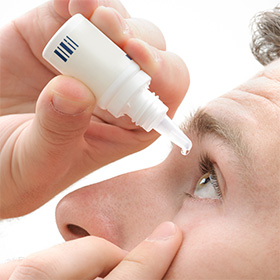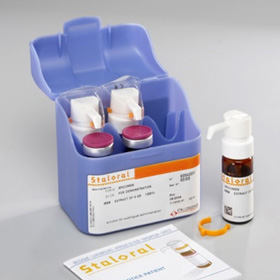Treatments
Symptom suppression

There are many symptomatic treatments available both over the counter and through prescription, for the range of allergic symptoms, including antihistamine tablets, nasal sprays, inhalers and creams. They can be effective for people with mild and intermittent symptoms, but may not be optimal for severe allergic rhinitis patients.
The most common type of symptomatic treatments include:
- Antihistamines (Claratyne, Zyrtec,…), which are recommended as the first-line therapy for mild intermittent allergic rhinitis and can be taken as nasal drops or in tablet form;
- Inhaled and intranasal corticosteroids (Seretide, Avamyst, Nasonex, Symbicort, Rhinocort.) are the first-line treatment in patients with moderate to severe allergic airway disease and are administered intra-nasally or inhaled, and
- Beta-2-mimetics, which are a symptomatic treatment for asthma and their main effect is to relieve bronchial spasms/ wheeze.
Immunotherapy

Allergen immunotherapy is the only treatment that treats the cause of respiratory allergic diseases, such as allergic rhinitis, commonly known as hay fever. It may be suitable for moderate to severe respiratory allergy sufferers who have not been able to adequately control their condition with symptomatic treatments.
Allergen immunotherapy can:
- reduce or stop your allergic symptoms, even after you stop the treatment;
- reduce or stop the use of symptomatic drugs even during the first year of treatment;
- prevent the onset of new allergies, also known as polysensitisation;
- stop the development of allergic rhinitis into allergic asthma, and
- significantly improve your quality of life.
Surgery

Surgery has a very small but critical role in assisting allergic patients. Three types of procedures maybe appropriate. For rhinitis, they are designed to ensure that the nasal airway remains open for breathing, for sinus disease they ensure adequate access for local topical therapies and for neurogenic/vasomotor rhinitis they reduce the reactivity of the nose.
The most common type of symptomatic treatments include:
- Inferior turbinate reduction is the most procedure performed. It provides a larger airway for better breathing and delivery of medication. It has no impact on the underlying allergic process and rarely applied in isolation;
- Sinus surgery is not technically a therapy for a “allergic” disease. However, many patients who have allergic type symptoms, may have chronic sinus inflammation. Endoscopic sinus surgery is designed to open the sinuses up to allow for effective local therapies to be delivered to the sinuses. The surgery is rarely a single intervention but to assist post-surgical therapies, and
- Vidian neurectomy is a highly effective therapy for patients with a ‘reactive’ nose. This is commonly referred to as non-allergic rhinitis or vasomotor rhinitis. It accounts for 30% of patients with rhinitis and, as the cause is a nerve reactivity rather than allergy, is appropriate for patients with changes due to cold weather, food, cigarette, perfume and temperature changes. These patients rarely get benefit from traditional allergy treatments and nasal sprays.
